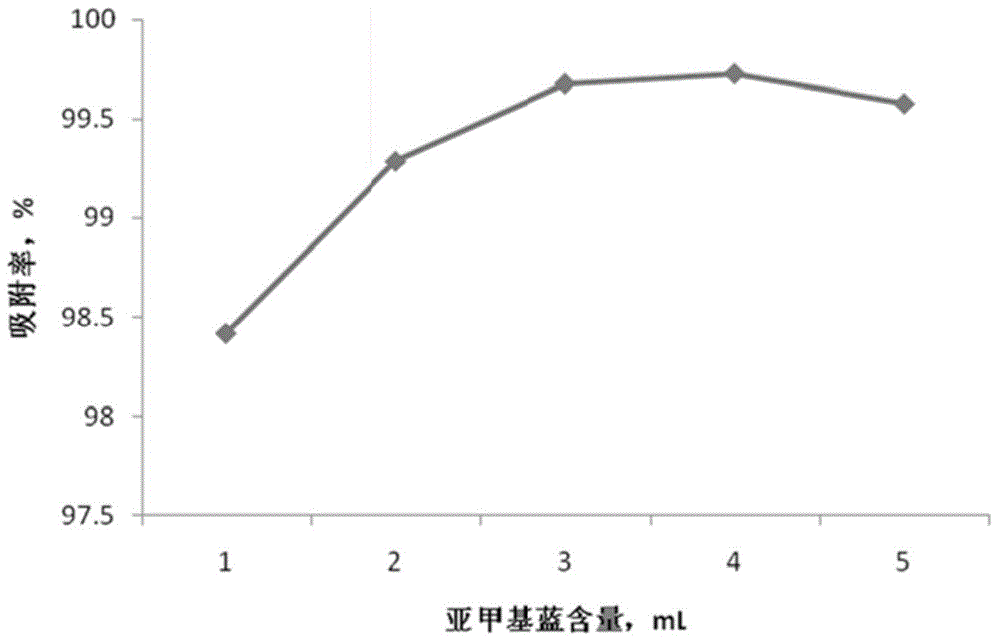Preparation method of compound water gel material
A technology of composite hydrogels and compounds, applied in chemical instruments and methods, other chemical processes, etc., to achieve the effects of high adsorption efficiency, good water absorption performance, and high application value
- Summary
- Abstract
- Description
- Claims
- Application Information
AI Technical Summary
Problems solved by technology
Method used
Image
Examples
Embodiment 1
[0018] Dissolve 0.2 g of glucose in 1 mL of DMSO, add 0.04 g of pyridine and 0.1 g of glycidyl methacrylate in sequence, after complete dissolution, stir and react in an oil bath at 40 °C for 18 h to obtain a methacrylated glucose solution. Dissolve 0.2g of xylose in 1mL of DMSO, add 0.04g of pyridine and 0.2g of glycidyl methacrylate in sequence, after complete dissolution, stir and react in an oil bath at 40°C for 18 h to obtain a methacrylated xylose solution . After cooling the two reaction solutions, mix them, add 0.8g of acrylic acid, 0.8g of acrylamide, 0.02g of N,N-methylenebisacrylamide, 0.02g of tetramethylethylenediamine, and add 5 mL of deionized water. Heat in a water bath at 70°C to completely dissolve each component. Then add 0.02g ammonium persulfate, after reacting for 2 h, take out the gel, first wash it with deionized water and cut it into small pieces, then soak it in deionized water for 7 days, replace the deionized water every 6 h, and finally put The p...
Embodiment 2
[0021] Dissolve 0.4 g of glucose in 1 mL of DMSO, add 0.08 g of pyridine and 0.4 g of glycidyl methacrylate in sequence, and after complete dissolution, stir and react in an oil bath at 40 °C for 18 h to obtain a methacrylated glucose solution. Dissolve 0.2g of xylose in 1mL of DMSO, add 0.04g of pyridine and 0.3g of glycidyl methacrylate in sequence, after complete dissolution, stir and react in an oil bath at 40°C for 18 h to obtain a methacrylated xylose solution . After cooling the two reaction solutions, mix them, add 0.8g of acrylic acid, 0.8g of acrylamide, 0.024g of N,N-methylenebisacrylamide, 0.024g of tetramethylethylenediamine, and add 5 mL of deionized water, Heat in a 70°C water bath to dissolve the components completely. Then add 0.024g ammonium persulfate, after reacting for 2 h, take out the gel, first wash with deionized water and cut into small pieces, then soak in deionized water for 7 days, replace the deionized water every 6 h, and finally put The produc...
Embodiment 3
[0024]Dissolve 0.6 g of glucose in 1 mL of DMSO, add 0.12 g of pyridine and 1.2 g of glycidyl methacrylate in sequence, after complete dissolution, stir and react in an oil bath at 40 °C for 18 h to obtain a methacrylated glucose solution. Dissolve 0.2 g of xylose in 1 mL of DMSO, add 0.04 g of pyridine and 0.45 g of glycidyl methacrylate in sequence, after complete dissolution, stir and react in an oil bath at 40 °C for 18 h to obtain a methacrylated xylose solution . After cooling the two reaction solutions, mix them, add 0.8 g of acrylic acid, 0.8 g of acrylamide, 0.026 g of N,N-methylenebisacrylamide, 0.026 g of tetramethylethylenediamine, and add 5 mL of deionized water, Heat in a 70°C water bath to dissolve the components completely. Thereafter, 0.026 g of ammonium persulfate was added, and after 2 h of reaction, the gel was taken out, washed with deionized water and cut into small pieces, then soaked in deionized water for 7 days, and the deionized water was replaced e...
PUM
 Login to View More
Login to View More Abstract
Description
Claims
Application Information
 Login to View More
Login to View More - R&D
- Intellectual Property
- Life Sciences
- Materials
- Tech Scout
- Unparalleled Data Quality
- Higher Quality Content
- 60% Fewer Hallucinations
Browse by: Latest US Patents, China's latest patents, Technical Efficacy Thesaurus, Application Domain, Technology Topic, Popular Technical Reports.
© 2025 PatSnap. All rights reserved.Legal|Privacy policy|Modern Slavery Act Transparency Statement|Sitemap|About US| Contact US: help@patsnap.com

